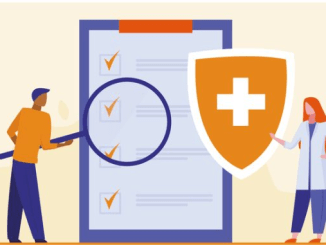
Understanding of your patients’ experiences is key to delivering high-quality care – and it starts with knowing the difference between what they expect and what they encounter
How well do you really understand what your patients experience within your practice? Patient experience goes far beyond whether someone leaves a positive review – it’s about the full journey a patient takes through the healthcare system. This includes interactions with reception staff, nurses, doctors and the systems in place, such as appointment booking, test follow-ups and communication throughout.
Patient Experience vs. Patient Satisfaction: What’s the Difference?
A common misconception is that patient experience and patient satisfaction mean the same thing. While they’re closely linked, they are not interchangeable.
Patient satisfaction focuses on whether the patient’s expectations were met. It’s subjective and can vary based on individual expectations, which may differ widely from patient to patient.
Patient experience, on the other hand, looks at what happened during the care process. It assesses specific, observable aspects of care – such as whether a patient was listened to, if communication was clear, or whether they were involved in decisions about their treatment.
One of the most established tools for measuring patient experience in general practice is the GP Patient Survey (GPPS). This national survey asks patients about various aspects of their care and their interactions with general practice services. The GPPS is one of the most widely recognised Patient Reported Experience Measures (PREMs). GPPS surveys are designed with validated, standardised questions that ensure reliable comparable results across practices.
Other Ways to Measure Patient Experience and Satisfaction
In addition to GPPS surveys, there are several other approaches that practice managers can use to gather meaningful insights:
Rapid-Cycle Feedback Surveys
Short, targeted surveys sent via SMS or email immediately after an appointment can capture real-time feedback. These are useful for spotting trends quickly and responding to issues as they arise.
Patient Satisfaction Questionnaires
These can include scaled questions about whether expectations were met (e.g., waiting times, treatment outcomes, staff attitude), and are useful for identifying gaps between service delivery and patient expectations.
Focus Groups or Listening Sessions
Organising structured conversations with groups of patients can offer deeper insights into their lived experiences and uncover issues not visible in survey data.
Patient Journey Mapping
Tracking the steps a patient takes from booking an appointment to follow-up care can help highlight pain points or inefficiencies in the process.
Comment Cards and Suggestion Boxes
Though more traditional, these still offer value for patients who prefer anonymity or are less digitally engaged.
Understanding both satisfaction and experience gives you a more complete picture of how your practice is performing from the patient’s perspective. While satisfaction tells you how patients feel, experience tells you what happened – and the combination of both can guide smarter decisions, service redesign and staff training initiatives. As a practice manager, regularly reviewing and acting on this feedback not only helps improve care quality and efficiency but also builds trust and engagement with your patient community.


Be the first to comment